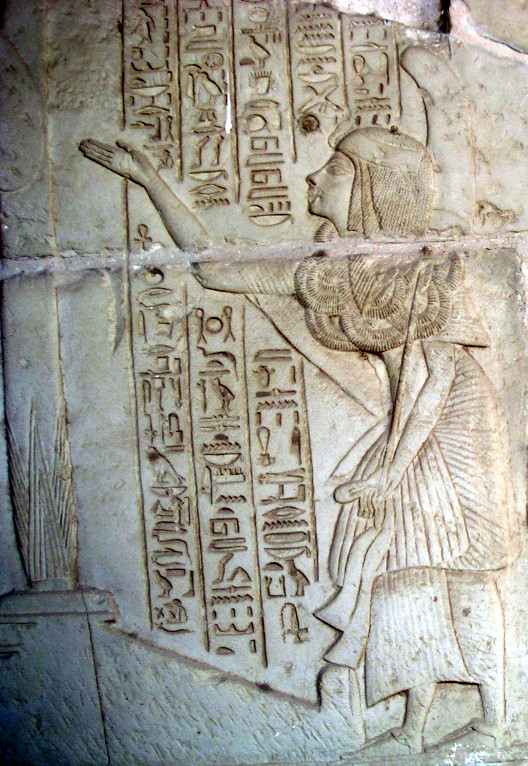Tomb Of Horemheb (Memphis) on:
[Wikipedia]
[Google]
[Amazon]
 The Memphite Tomb of Horemheb is located in the
The Memphite Tomb of Horemheb is located in the
 The Memphite Tomb of Horemheb is located in the
The Memphite Tomb of Horemheb is located in the Saqqara
Saqqara ( ar, سقارة, ), also spelled Sakkara or Saccara in English , is an Egyptian village in Giza Governorate, that contains ancient burial grounds of Egyptian royalty, serving as the necropolis for the ancient Egyptian capital, Memphis. ...
necropolis, near Memphis, Egypt. It was constructed before Horemheb
Horemheb, also spelled Horemhab or Haremhab ( egy, ḥr-m-ḥb, meaning "Horus is in Jubilation") was the last pharaoh of the Eighteenth dynasty of Egypt, 18th Dynasty of Egypt (1550–1295 BC). He ruled for at least 14 years between 131 ...
ascended to the throne and was never used for his burial, since he later built the Theban tomb KV57
Tomb KV57 is the royal tomb of Horemheb, the last pharaoh of the Eighteenth Dynasty and is located in the Valley of the Kings, Egypt.
The tomb was located by Edward Ayrton in February 1908 for Theodore Davis. Due to its location in the valley ...
for this purpose. His two wives Mutnedjmet
Mutnedjmet, also spelled Mutnedjemet, Mutnodjmet, Mutnodjemet ( egy, mw.t-nḏm.t) was an ancient Egyptian queen, the Great Royal Wife of Horemheb, the last ruler of the 18th Dynasty. The name, Mutnedjmet, translates as: ''The sweet Mut.''
Tit ...
and Amenia were buried within the structure.
The tomb was discovered by art robbers at the beginning of the 19th century. Looted reliefs were acquired by a number of European and American museums. The tomb's location was then lost, it was relocated in 1975 and excavated in 1979.
The tomb was built in three phases, as Horemheb's status rose. The first design consisted of an entry pylon into forecourt, a colonnade
In classical architecture, a colonnade is a long sequence of columns joined by their entablature, often free-standing, or part of a building. Paired or multiple pairs of columns are normally employed in a colonnade which can be straight or curv ...
d court containing the burial shaft and three chapels or offering rooms. Intrusive burials were found in the side chapels. The forecourt was then walled to produce two small chapels, one at each side. They were entered by two new piercings through the pylon. A new walled forecourt was constructed in front of the pylon. To make this extension a 5th–6th Dynasty
The Sixth Dynasty of ancient Egypt (notated Dynasty VI), along with the Third, Fourth and Fifth Dynasty, constitutes the Old Kingdom of Dynastic Egypt.
Pharaohs
Known pharaohs of the Sixth Dynasty are listed in the table below. Manetho ac ...
mastaba
A mastaba (, or ), also mastabah, mastabat or pr- djt (meaning "house of stability", " house of eternity" or "eternal house" in Ancient Egyptian), is a type of ancient Egyptian tomb in the form of a flat-roofed, rectangular structure with inwar ...
was demolished and the burial shaft with a burial chamber some 17m below incorporated into the new forecourt. Burials from the 19th Dynasty
The Nineteenth Dynasty of Egypt (notated Dynasty XIX), also known as the Ramessid dynasty, is classified as the second Dynasty of the Ancient Egyptian New Kingdom period, lasting from 1292 BC to 1189 BC. The 19th Dynasty and the 20th Dynasty fur ...
were found at 9m depth. Finally the forecourt was closed by a pylon some 7m high and colonnaded to form the first peristyle
In ancient Greek and Roman architecture, a peristyle (; from Greek ) is a continuous porch formed by a row of columns surrounding the perimeter of a building or a courtyard. Tetrastoön ( grc, τετράστῳον or τετράστοον, lit=fou ...
open court. The narrowed original forecourt was covered with a vaulted roof and contained statues while the chapels became storage rooms.
Military scenes were carved on the original peristyle court and scenes showing Horemheb's duties in office on the walls of the later, first peristyle open court including one where he deputised for Tutankhamun
Tutankhamun (, egy, twt-ꜥnḫ-jmn), Egyptological pronunciation Tutankhamen () (), sometimes referred to as King Tut, was an Egyptian pharaoh who was the last of his royal family to rule during the end of the Eighteenth Dynasty (ruled ...
on the north wall. On the North wall are scenes from the funeral, showing kiosks with smash pots and mourners. Only the lowest register is well preserved. From the next register above only the legs of horses and the wheels of chariots are visible. On the east wall, on the north side are shown houses. The wall is in general only badly preserved.
Careful inspection shows that the uraei
The Uraeus (), or Ouraeus (Ancient Greek: , ; Egyptian: ', "rearing cobra"), ''(plural: Uraei)'' is the stylized, upright form of an Egyptian cobra, used as a symbol of sovereignty, royalty, deity and divine authority in ancient Egypt.
Symbolis ...
were added to the images after Horemheb became Pharaoh.
Notes and references
References
Bibliography
* * {{coord missing, Egypt Horemheb Saqqara Tombs of ancient Egypt